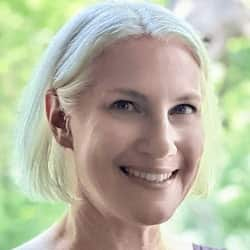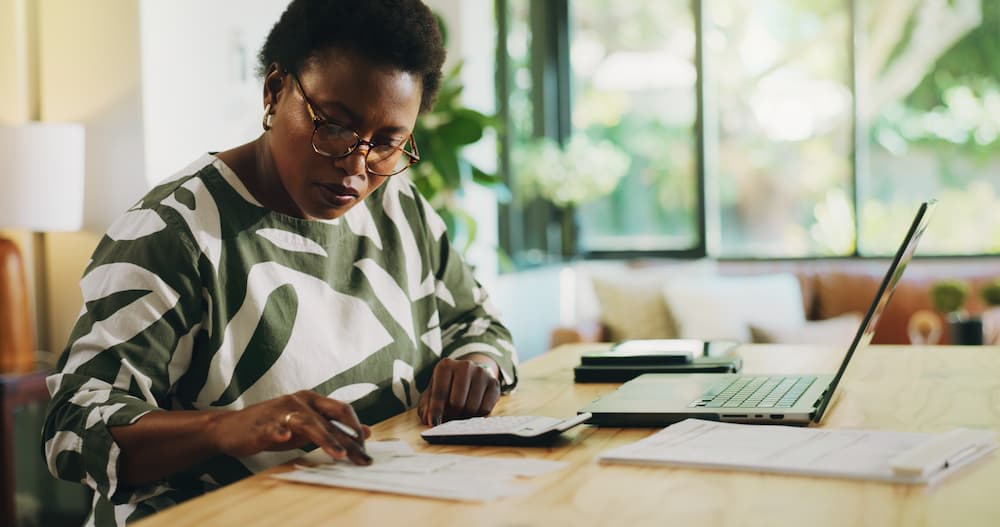What are the top 10 states with highest car insurance?
Louisiana, Florida, California, Michigan, Colorado, South Dakota, Kentucky, Montana, Washington, D.C., and Oklahoma are the 10 most expensive states for car insurance. Many factors play into the cost of car insurance, and each of these states faces high costs for a variety of reasons.
Louisiana
Louisiana has some of the highest car insurance rates in the country, with average annual premiums of $2,883. That’s almost $1,000 more than the national average. Why? Severe weather plays a major role. Hurricanes and other severe storms cause extensive damage including flooding, which means a lot of claims. There are other factors, though. One of them is increased lawsuits. Another is uninsured drivers — Louisiana has a high number of them. Population density and a considerable number of drivers on the road play a big part.
- Average annual premium for full coverage: $2,883
- Dollar difference from national average: $988
Florida
Florida’s average annual car insurance rate is $2,694, 42% more than the national average. Florida has some of the most severe weather in the country. It has also experienced many lawsuits, uninsured drivers, and fraud related to claims. Florida is a no-fault state, a system meant to reduce lawsuits, but in practice, it hasn’t worked out that way. Florida has more insurance litigation than any other state.
- Average annual premium for full coverage: $2,694
- Dollar difference from national average: $799
California
Car insurance costs about $2,416 per year in California, which is 27% more than the national average. Many parts of California have heavy traffic patterns, leading to a high number of accidents. Los Angeles, for example, has 27% of the entire population of the state and over 6.7 million drivers. With the cost of car parts increasing, insurance companies have to pay out more for claims. California has had multiple wildfires in recent years, which has caused thousands of claims. All these factors play a part in increasing car insurance rates.
- Average annual premium for full coverage: $2,416
- Dollar difference from national average: $521
Michigan
Michigan’s average annual car insurance rate is $2,352, which is 24% higher than the national average. According to a 2023 report by the Insurance Information Institute (Triple-I), Michigan has a high number of uninsured drivers. Michigan’s no-fault insuranceAn auto insurance system where medical expenses are covered by your insurer regardless of fault. Personal injury protection (PIP) and medical payments (MedPay) are no-fault insurance coverages. laws play a role in the high cost of coverage. Although recent legislation has made some changes, the high limits on personal injury protectionPersonal injury protection (PIP) pays for your medical, hospital and funeral expenses resulting from a car accident, regardless of who's at fault. have historically driven up the cost of claims and created a system ripe for fraud. As a result, Michigan has spent a lot of time among the most expensive states for car insurance.
- Average annual premium for full coverage: $2,352
- Dollar difference from national average: $457
Colorado
Colorado's annual average car insurance rate is $2,337. The state experiences severe weather, and hail damage from various storms wreaks havoc on cars, which is one reason for higher premiums. Also, like the other states on the list, uninsured drivers are a problem in Colorado.
- Average annual premium for full coverage: $2,337
- Dollar difference from national average: $442
South Dakota
The same issues that plague other states also affect South Dakota– a high number of uninsured motorists, increasing cost of car parts and severe weather. Another factor is high health insurance costs. If you are in an accident and one of the parties involved needs medical care, these costs play a part in what’s paid out in claims. Higher claims payouts equal higher rates. South Dakota’s annual average rates are $2,280, which is 20% more than the national average.
- Average annual premium for full coverage: $2,280
- Dollar difference from national average: $385
Kentucky
Kentucky has an annual average rate of $2,228. Like several other states on this list, Kentucky is a no-fault state, which drives up insurance costs since insurers must pay medical claims regardless of cost. Kentucky also has high traffic and vehicle theft, both of which drive up car insurance costs.
- Average annual premium for full coverage: $2,228
- Dollar difference from national average: $333
Montana
Montana drivers pay an average of $2,193 per year for car insurance. Montana experiences some severe weather, which means more claims. Montana also has a high number of traffic fatalities. Simply put, driving in Montana is considered risky and insurers adjust their pricing accordingly. Other factors also contribute to higher rates– more expensive replacement parts for cars, higher healthcare costs and uninsured drivers.
- Average annual premium for full coverage: $2,193
- Dollar difference from national average: $298
Washington, D.C.
Washington, D.C.'s high population density and traffic, which result in many accidents and vehicle thefts, make car insurance expensive. The annual average for car insurance is $2,157, 14% above the national average. Although it’s not a state, D.C. makes our list due to a population that is as great as or greater than some states.
- Average annual premium for full coverage: $2,157
- Dollar difference from national average: $262
Oklahoma
Oklahoma has average annual premiums of $2,138, about 13% more than the national average. Oklahoma is in “tornado alley,” a region of the United States prone to tornado activity. Severe weather drives up car insurance costs because multiple people file claims all at once, putting strain on the insurance companies’ finances. Oklahoma also has a high number of accidents. Inflationary costs that affect car parts play a big part in the amount insurance companies pay out after accidents, which in turn increases premiums.
- Average annual premium for full coverage: $2,138
- Dollar difference from national average: $243
States with the highest car insurance rates by coverage level
The amount and type of car insurance you purchase will directly impact how much you pay for car insurance. However, because states have different mandatory coverage limits, the cost of a state minimum policy will be very different by state.
Below, you can compare the highest car insurance rates by state for state minimum car insurance, liability only coverage at 50/100/50, and full coverage car insurance with liability limits of 100/300/100 and $500 deductibles.
| State | Average monthly premium for full coverage | Average 6 months premium for full coverage |
|---|---|---|
| Louisiana | $240 | $1,442 |
| Florida | $224 | $1,347 |
| California | $201 | $1,208 |
| Michigan | $196 | $1,176 |
| Colorado | $195 | $1,169 |
| South Dakota | $190 | $1,140 |
| Kentucky | $186 | $1,114 |
| Montana | $183 | $1,097 |
| Washington, D.C. | $180 | $1,079 |
| Oklahoma | $178 | $1,069 |
| Delaware | $172 | $1,032 |
| Rhode Island | $172 | $1,030 |
| Nevada | $172 | $1,030 |
| New Mexico | $171 | $1,024 |
| Texas | $170 | $1,022 |
| South Carolina | $167 | $1,005 |
| Mississippi | $167 | $1,004 |
| West Virginia | $167 | $1,002 |
| Missouri | $165 | $991 |
| Georgia | $164 | $985 |
| Arkansas | $163 | $978 |
| Minnesota | $159 | $956 |
| Nebraska | $159 | $951 |
| New Jersey | $159 | $951 |
| Kansas | $158 | $950 |
| Pennsylvania | $156 | $936 |
| New York | $156 | $935 |
| Alabama | $155 | $930 |
| Utah | $152 | $913 |
| Arizona | $151 | $906 |
| Wyoming | $146 | $879 |
| Maryland | $145 | $873 |
| North Carolina | $145 | $871 |
| Massachusetts | $144 | $863 |
| Connecticut | $144 | $863 |
| Oregon | $140 | $839 |
| Tennessee | $140 | $838 |
| Alaska | $140 | $838 |
| North Dakota | $139 | $832 |
| Wisconsin | $139 | $832 |
| Iowa | $136 | $815 |
| Washington | $134 | $804 |
| Illinois | $128 | $766 |
| Hawaii | $126 | $758 |
| Indiana | $126 | $757 |
| Virginia | $122 | $735 |
| Idaho | $119 | $714 |
| Ohio | $118 | $709 |
| Vermont | $110 | $659 |
| New Hampshire | $105 | $633 |
| Maine | $98 | $587 |
| State | Average monthly premium for liability-only | Average 6 months premium for liability-only |
|---|---|---|
| Florida | $136 | $815 |
| Louisiana | $106 | $633 |
| Nevada | $87 | $521 |
| Delaware | $85 | $511 |
| South Carolina | $77 | $462 |
| New Jersey | $76 | $457 |
| California | $72 | $432 |
| New York | $69 | $413 |
| Kentucky | $67 | $405 |
| Rhode Island | $67 | $404 |
| Georgia | $66 | $395 |
| Washington, D.C. | $65 | $393 |
| Connecticut | $65 | $391 |
| Texas | $65 | $387 |
| Arizona | $64 | $382 |
| Maryland | $63 | $378 |
| Utah | $63 | $378 |
| Washington | $61 | $365 |
| Colorado | $60 | $359 |
| Oregon | $59 | $355 |
| Michigan | $58 | $347 |
| New Mexico | $55 | $329 |
| Oklahoma | $55 | $328 |
| Massachusetts | $55 | $328 |
| Alabama | $53 | $319 |
| Mississippi | $53 | $318 |
| Arkansas | $49 | $295 |
| West Virginia | $49 | $293 |
| Missouri | $49 | $291 |
| Hawaii | $48 | $286 |
| Tennessee | $46 | $273 |
| Montana | $45 | $270 |
| North Carolina | $44 | $261 |
| Minnesota | $43 | $256 |
| Alaska | $42 | $254 |
| Pennsylvania | $42 | $252 |
| Indiana | $42 | $249 |
| Virginia | $40 | $239 |
| Illinois | $39 | $236 |
| Kansas | $39 | $236 |
| Ohio | $37 | $223 |
| Idaho | $37 | $220 |
| Wisconsin | $35 | $212 |
| New Hampshire | $35 | $208 |
| Nebraska | $31 | $186 |
| North Dakota | $31 | $185 |
| Maine | $28 | $170 |
| South Dakota | $28 | $169 |
| Wyoming | $28 | $166 |
| Vermont | $27 | $162 |
| Iowa | $27 | $160 |
| State | Monthly premium for state minimum coverage | 6-months premium for state minimum |
|---|---|---|
| Florida | $83 | $497 |
| New Jersey | $71 | $426 |
| Delaware | $66 | $394 |
| New York | $61 | $366 |
| Maryland | $61 | $363 |
| Louisiana | $60 | $361 |
| South Carolina | $60 | $360 |
| Nevada | $60 | $360 |
| Connecticut | $59 | $352 |
| Michigan | $54 | $327 |
| Rhode Island | $54 | $323 |
| Oregon | $53 | $320 |
| Kentucky | $51 | $303 |
| Utah | $49 | $291 |
| Georgia | $48 | $288 |
| Texas | $48 | $286 |
| Washington, D.C. | $46 | $279 |
| California | $46 | $276 |
| Arizona | $43 | $258 |
| Massachusetts | $43 | $256 |
| West Virginia | $43 | $255 |
| Missouri | $41 | $244 |
| North Carolina | $40 | $238 |
| Minnesota | $40 | $238 |
| Mississippi | $39 | $232 |
| Tennessee | $37 | $221 |
| Washington | $36 | $219 |
| Colorado | $36 | $219 |
| Kansas | $36 | $217 |
| Alabama | $36 | $217 |
| Virginia | $36 | $214 |
| Illinois | $35 | $211 |
| New Mexico | $35 | $211 |
| Indiana | $35 | $208 |
| Oklahoma | $34 | $204 |
| Alaska | $33 | $199 |
| New Hampshire | $33 | $199 |
| Arkansas | $33 | $198 |
| Hawaii | $33 | $198 |
| Pennsylvania | $31 | $187 |
| Wisconsin | $30 | $183 |
| Ohio | $30 | $181 |
| Idaho | $30 | $178 |
| Montana | $29 | $175 |
| North Dakota | $29 | $174 |
| Maine | $28 | $168 |
| Nebraska | $28 | $166 |
| South Dakota | $26 | $154 |
| Vermont | $25 | $153 |
| Wyoming | $24 | $144 |
| Iowa | $22 | $130 |
Highest car insurance rates by city
The table below shows specific cities in the states mentioned above so you can see how car insurance rates compare city to city.
Here are some of the cities with the highest rates, among others:
- Miami - $3,345
- Dearborn - $3,305
- Baton Rouge - $3,166
- Los Angeles - $3,149
| State | City | Avg annual rate | % compared to state avg |
|---|---|---|---|
| Louisiana | Alexandria | $3,256 | 13% more |
| Louisiana | Baton Rouge | $3,166 | 10% more |
| Louisiana | Bossier City | $2,625 | 9% less |
| Louisiana | Houma | $2,739 | 5% less |
| Louisiana | Kenner | $2,987 | 4% more |
| Louisiana | Lafayette | $3,152 | 9% more |
| Louisiana | Lake Charles | $3,061 | 6% more |
| Louisiana | Monroe | $3,166 | 10% more |
| Louisiana | New Orleans | $2,949 | 2% more |
| Louisiana | Shreveport | $2,840 | 1% less |
| Florida | Cape Coral | $2,591 | 4% less |
| Florida | Fort Lauderdale | $3,174 | 18% more |
| Florida | Hialeah | $3,355 | 25% more |
| Florida | Jacksonville | $2,692 | almost equal |
| Florida | Miami | $3,345 | 24% more |
| Florida | Orlando | $2,835 | 5% more |
| Florida | Port St. Lucie | $2,824 | 5% more |
| Florida | St. Petersburg | $2,909 | 8% more |
| Florida | Tallahassee | $2,537 | 6% less |
| Florida | Tampa | $3,131 | 16% more |
| California | Anaheim | $2,572 | 6% more |
| California | Bakersfield | $2,477 | 3% more |
| California | Fresno | $2,385 | 1% less |
| California | Long Beach | $2,681 | 11% more |
| California | Los Angeles | $3,149 | 30% more |
| California | Oakland | $2,802 | 16% more |
| California | Sacramento | $2,665 | 10% more |
| California | San Diego | $2,324 | 4% less |
| California | San Francisco | $2,777 | 15% more |
| California | San Jose | $2,406 | almost equal |
| Michigan | Ann Arbor | $2,119 | 10% less |
| Michigan | Dearborn | $3,305 | 41% more |
| Michigan | Detroit | $3,280 | 39% more |
| Michigan | Grand Rapids | $2,248 | 4% less |
| Michigan | Lansing | $2,234 | 5% less |
| Michigan | Livonia | $2,794 | 19% more |
| Michigan | Sterling Heights | $2,680 | 14% more |
| Michigan | Troy | $2,617 | 11% more |
| Michigan | Warren | $2,645 | 12% more |
| Michigan | Westland | $3,058 | 30% more |
| Colorado | Arvada | $2,360 | 1% more |
| Colorado | Aurora | $2,432 | 4% more |
| Colorado | Colorado Springs | $2,349 | 1% more |
| Colorado | Denver | $2,337 | almost equal |
| Colorado | Fort Collins | $2,209 | 5% less |
| Colorado | Greeley | $2,356 | 1% more |
| Colorado | Lakewood | $2,492 | 7% more |
| Colorado | Pueblo | $2,483 | 6% more |
| Colorado | Thornton | $2,220 | 5% less |
| Colorado | Westminster | $2,234 | 4% less |
| South Dakota | Aberdeen | $1,983 | 13% less |
| South Dakota | Brookings | $1,916 | 16% less |
| South Dakota | Huron | $2,150 | 6% less |
| South Dakota | Mitchell | $2,091 | 8% less |
| South Dakota | Pierre | $2,323 | 2% more |
| South Dakota | Rapid City | $2,497 | 10% more |
| South Dakota | Sioux Falls | $1,997 | 12% less |
| South Dakota | Spearfish | $2,561 | 12% more |
| South Dakota | Watertown | $1,939 | 15% less |
| South Dakota | Yankton | $2,111 | 7% less |
| Kentucky | Bowling Green | $1,987 | 11% less |
| Kentucky | Covington | $2,038 | 9% less |
| Kentucky | Elizabethtown | $1,910 | 14% less |
| Kentucky | Florence | $1,928 | 13% less |
| Kentucky | Georgetown | $2,001 | 10% less |
| Kentucky | Jeffersontown | $2,175 | 2% less |
| Kentucky | Jeffersonville | $2,176 | 2% less |
| Kentucky | Lexington | $1,945 | 13% less |
| Kentucky | Louisville | $2,359 | 6% more |
| Kentucky | Nicholasville | $1,992 | 11% less |
| Kentucky | Owensboro | $1,863 | 16% less |
| Kentucky | Richmond | $1,919 | 14% less |
| Montana | Anaconda-Deer Lodge County | $2,013 | 8% less |
| Montana | Belgrade | $2,018 | 8% less |
| Montana | Billings | $2,157 | 2% less |
| Montana | Bozeman | $2,026 | 8% less |
| Montana | Butte | $2,054 | 6% less |
| Montana | Great Falls | $2,071 | 6% less |
| Montana | Havre | $2,222 | 1% more |
| Montana | Helena | $1,942 | 11% less |
| Montana | Kalispell | $2,196 | almost equal |
| Montana | Missoula | $1,908 | 13% less |
| Oklahoma | Broken Arrow | $2,225 | 4% more |
| Oklahoma | Edmond | $2,269 | 6% more |
| Oklahoma | Enid | $1,996 | 7% less |
| Oklahoma | Lawton | $2,009 | 6% less |
| Oklahoma | Midwest City | $2,411 | 13% more |
| Oklahoma | Moore | $2,271 | 6% more |
| Oklahoma | Norman | $2,202 | 3% more |
| Oklahoma | Oklahoma City | $2,373 | 11% more |
| Oklahoma | Stillwater | $2,064 | 3% less |
| Oklahoma | Tulsa | $2,339 | 9% more |
Why do insurance rates vary by state?
“Car insurance rates can vary from state to state based upon various factors,” says Cindy Baroway, executive director of risk management & insurance (RMI) program at the University of Colorado Denver. “They are:
- The required minimum liability rates in each state
- Jury verdict awards for auto accident cases
- Personal Injury Protection (PIP) requirements or not
- Number of uninsured motorists in the state
- Types of storms that damage cars—such as hail in Colorado (claims frequency and severity)
- Frequency of auto thefts and/or vandalism.”
The amount of liability insurance you must legally carry varies by state. This means the price for basic insurance will vary as well. There are many other things that go into car insurance rates, however. Some states, such as Florida, have had a high incidence of lawsuits related to insurance claims.
Another factor is the number of uninsured or underinsured drivers in a particular state. Most of the states on the list have a lot of uninsured drivers, and this puts a strain on those who do have insurance. The risk is pooled together for everyone to pay, so essentially, you’re paying for accidents that both insured and uninsured people are involved in. Some states require uninsured motorist coverage to combat the costs of uninsured accidents, but that drives up rates for insured drivers as well.
Weather is another huge factor that affects car insurance costs. Severe weather and natural disasters like wildfires damage a lot of property, causing hundreds or thousands of claims all at once. This means the insurance company must not only do extra administrative work to process claims but also pay out millions of dollars in a short period of time. This can cause rates to increase significantly. Sometimes an insurer leaves a state if there are too many natural disaster claims because it’s not worth it to their bottom line. This makes it difficult for drivers to find competitive insurance quotes.
How drivers can lower their insurance costs
Baroway points to the following ways to lower your car insurance rates:
- Have a good motor vehicle record—no accidents, no points, or low points on their driving record
- Increase deductibles
- Take driver training courses (usually age-dependent—for new drivers such as high schoolers or for older drivers)
- Carry only the coverage you need (on an older car, full coverage may not be necessary or worth the cost)
- Have a good insurance score (this is based on your credit history, so work to improve it)
While some factors are out of your control, like the weather, cost of car parts and healthcare and the number of uninsured drivers on the road, these are things you can do to keep your personal costs down.
Methodology
Insurance.com commissioned car insurance rates from Quadrant Information Services for all 50 states and Washington, D.C., covering 34,588 ZIP codes. The rates sampled are based on a 40-year-old male driver with a clean record and good credit who drives a 2023 Honda Accord LX. Rates are based on full coverage of 100/300/100 liability limits and $500 deductibles.
Sources:
- Insurance Information Insititute. “Facts + Statistics: Uninsured motorists” Accessed April 2025.
- Insurance Information Institute. “Facts + Statistics: Auto insurance” Accessed April 2025.
- Insurance Information Institute. “Legal System Abuse: State of the Risk” Accessed April 2025.
- Insurance Information Institute. “Background on No-Fault Insurance” Accessed April 2025.
FAQ
Why is car insurance more expensive in some states?
Car insurance is more expensive in some states due to many factors. Severe weather, lawsuits, uninsured drivers and state minimum liability requirements all affect rates.
Can I lower my car insurance premium if I live in a high-cost state?
You can lower your car insurance premium by maintaining a good driving record, increasing your deductibleThe deductible is the amount you pay out of pocket for a covered loss when you file a claim. (make sure you can afford it if you need to pay it) and taking advantage of all discounts your insurance carrierAn insurance carrier is the company that provides your car insurance policy and pays claims. offers. Some factors are simply out of your control, however.





